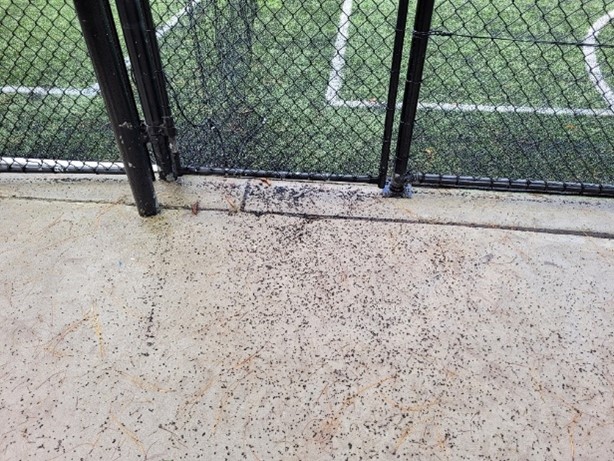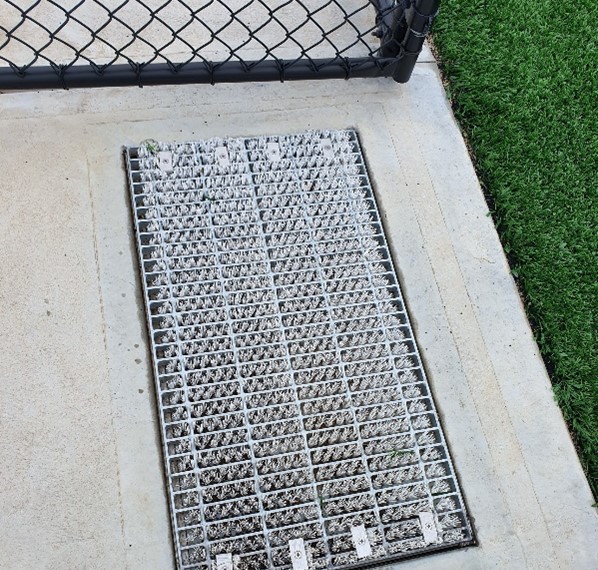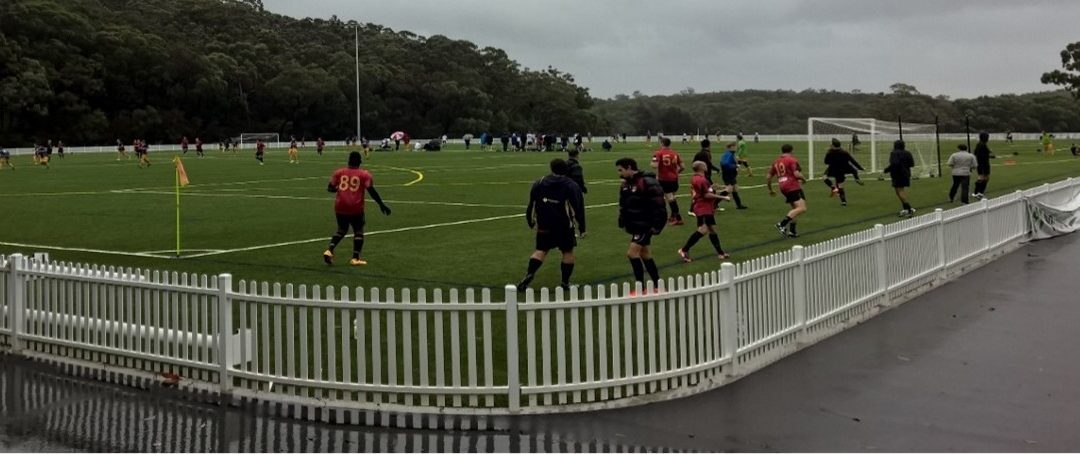How & Why To Prevent ‘Performance Infill’ Migration Out Of Longpile Field Surfaces
Whilst Synthetic fields will never replace all natural grass areas (nor should they) often overlooked are the benefits that these fields provide, some of which are listed below:
- Synthetic Fields provide a use for end-of-life tyres as performance infill and shock pad that would otherwise be disposed of.
- In contrast to natural grass fields, they require little to no agricultural chemicals for ongoing maintenance.
- Again, in contrast to natural grass fields, they do not require watering and in many cases capture water for recycling.
- They are mostly all-weather surfaces meaning that they can be used for community sport and other activities that are often cancelled in inclement weather.
- In almost all cases they are ‘open to the public facilities’, and we have seen, over covid and wet Sydney weather of recent times, a significant increase in use of these facilities by all members of public.
- They provide a significant income to local councils, income which can be used to support other activities.


Nevertheless, prevention of ‘performance infill’ migration out of filled synthetic turf sporting fields is critically important. Performance infill is an important element of filled synthetic turf systems enhancing not only field playability but also increasing field longevity by providing protection to the synthetic grass fibres. There are also increasingly important environmental reasons to focus on what steps can be taken to prevent contamination of adjacent natural areas by migrating field performance infill.
The Challenge
Performance infill is an important but free moving component within the synthetic turf sports field system. Features of this movement are;
- A tendency of the infill to move away from the high traffic areas on the field, specifically from the centre of the field to the edges. This often results in a build-up of infill at the field edges.
- Additionally, players can carry the infill with them on their boots – in much the same manner they would the mud from a natural grass field.


Once this performance infill is at the field edges or near the entrance gates to the field, and if there is no barrier, it will find its way via the elements onto the field’s perimeter path. On older fields particularly, paths are generally constructed to slope away from the field, so the natural progression of the infill is onto the surrounding natural environment.
Potential Solutions
As the most specialised and experienced synthetic turf sports field maintenance provider, Sports Clean has comprised the following list of recommendations where solutions may be found to counter this Challenge.
- New Field Design – The Synthetic grass industry is aware of their responsibly and are pro-actively deploying control measures on fields to limit microplastics getting into surrounding environment via many methods including design consideration for keeping infill on the field via effective drainage and good drainage sieves, perimeter barriers (such as curbs and paths), walk off matts.
- Retrofitting existing fields – adding infill capturing matts at each field gate, adding sieves to drainage pits, retrofitting a perimeter barrier, and using sand only as infill in the runoff surrounds of the field.

- Install – Appropriate levels of infill should be added to the field from the installation outset, this helps slow the degradation and breakage of the synthetic fibres (also a microplastic)
- Maintenance – Brushing performance infill from the field perimeter back into the high traffic areas, picking up and discarding any contaminated infill that finds its way into the natural environment, blowing the paths surrounding the field back onto the field and encouraging the retrofitting of older fields.
- Education of all stakeholders particularly grounds staff about the importance of performance infill and keeping it on the field.
Ultimately this challenge is evolving with changing market and user expectations. All Industry Stakeholders involved in the design, construction, maintenance, and ownership of filled synthetic turf sports fields have a perspective and can contribute to finding a solution for the continuance of these valuable community assets.


How Sports Clean can help.
Sports Clean has over twenty years of experience in the maintenance of synthetic sports surfaces. We work to develop ongoing relationships with all Facility Stakeholders including Councils and Club Committees seeking to add value through our expertise in the field maintenance industry. The experience and knowledge of our Key Personnel is unmatched in Australia; we own a fleet of SMG Maintenance Equipment available for different types of field servicing and we prioritize communication between the various facility stakeholders.
Contact us to discuss your facility needs
Phone:
E: info@sportsclean.com.au
W: www.sportsclean.com.au

